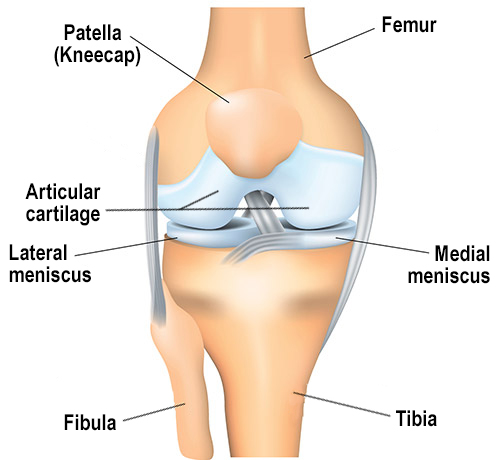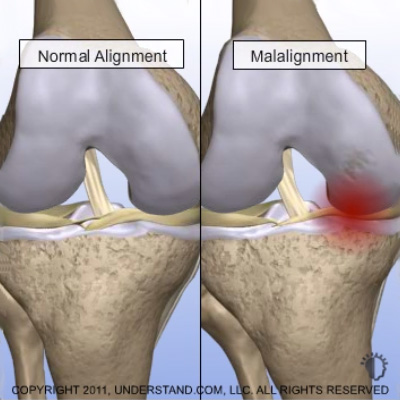Joint preservation surgery to repair damage to articular cartilage inflicted by osteoarthritis and malalignment
A high tibial osteotomy is a surgical procedure that realigns the knee joint. For some patients who have knee arthritis, this surgery can delay or prevent the need for a partial or total knee replacement by preserving damaged joint tissue.
Osteoarthritis and Malalignment of the Knee
With each step you take, forces equal to 3 to 8 times your body weight travel between the femur (thighbone) and tibia (shin bone) in your knee. These forces are dampened by two menisci located on the inner and outer portion of the knee, and the ends of the bones are protected by articular cartilage.

Patients who have osteoarthritis (also known as degenerative arthritis) of the knee experience a successive wearing on the menisci and articular cartilage, which may develop tears. The degeneration of these tissues limits the knee’s ability to glide smoothly and can result in popping, catching, locking, clicking and pain.
In a condition called malalignment, unbalanced forces cause excessive pressure on either in the inner (medial) or outer (lateral) portion of the knee. Degenerative arthritis and malalignment can cause the knee’s protective tissues to wear on one side more than the other in a repetitive cycle of damage.

High Tibial Osteotomy as an Alternative to Knee Replacement
When the joint damage is beyond repair, knee replacement surgery can correct this condition. But in certain patients, a high tibial osteotomy can realign the knee to take pressure off the damaged side by wedging open the upper portion of the tibia to reconfigure the knee joint. Weightbearing is then shifted away from the damaged or worn tissue and onto the healthier tissue.
Because these benefits typically fade after 8 to 10 years, this type of osteotomy is generally considered to be a way to prolong the time before a knee replacement is necessary. This procedure is typically reserved for younger patients with pain resulting from instability and malalignment. An osteotomy may also be performed in conjunction with other joint preservation procedures in order to allow for cartilage repair tissue to grow without being subjected to excessive pressure.
For an interactive view of this procedure, watch the animated video below.


